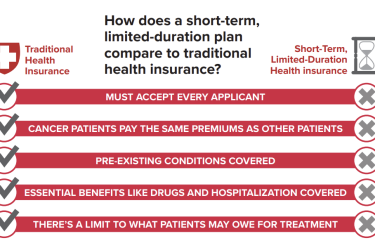
They say health care is local. But the convergence of the smartphone and telehealth is making health care ubiquitous.
Virtual visits, a.k.a. direct-to-consumer (DTC) telehealth services, are growing in number and popularity. DTC telehealth companies provide on-demand physician video, text and phone consultations via mobile apps and websites for a nominal fee, paid by credit card. Some insurers are beginning to cover DTC telehealth visits in their health benefit plans.
DTC telehealth is convenient, accessible and relatively cheap for consumers. In 2015, there were 1.25 million DTC telemedicine website visits, according to the AARP.
DTC telehealth has garnered largely favorable media attention in recent years, and part of the reason is the lack of legitimate studies on the safety and efficacy of DTC telehealth. However, new studies are giving fresh scrutiny to this sector.
On Sunday, JAMA Dermatology published a study indicating that DTC telehealth websites with dermatology consultations (teledermatology) made incorrect diagnoses, recommended treatments that contradicted with standard guidelines and issued prescriptions that lacked disclosure about possible adverse effects and pregnancy risks.
In the study, personnel at the University of California, San Francisco, posed as patients to seek consultations for a variety of skin issues from DTC telehealth companies. The study authors used photographs of skin conditions taken from online image search engines for the telehealth doctors to analyze and diagnose. Sixteen DTC websites took the bait for a total of 62 fake diagnoses. Among the findings:
- Major diagnoses were missed, including secondary syphilis, eczema and polycystic ovarian syndrome.
- All the patients were in California but some got diagnoses from physicians overseas without California physician licenses (as required by law). Only 26 percent of providers disclosed licensure information.
- None of the telehealth companies asked for patient ID or raised questions about the source of the images presented for analysis.
- Just 23 percent asked for the name of the patient’s primary care provider and 10 percent offered to send records to the provider.
- While some correct diagnoses were made, providers often failed to ask relevant and simple follow up questions.
Jack S. Resneck, M.D., lead author of the study and professor and vice chair of the Dermatology Department at UCSF, wrote that the findings “raise doubts about the quality of skin disease diagnosis and treatment being provided by a variety of DTC telemedicine websites and apps.”
Another recent study by the RAND Corporation indicated that DTC telehealth providers were less likely to order diagnostic testing than in-person doctors and had poorer performance on appropriate antibiotic prescribing for bronchitis.
Just a few years ago, telehealth (or telemedicine) typically was limited to hospitals and clinics, which used secure terminals for doctor-to-doctor consultations, usually for specialty cases such as strokes and burns. These telehealth visits have saved lives and improved outcomes.
DTC telehealth is ripe for media coverage as it becomes more convenient and sometimes cheaper to talk to a physician from a smartphone rather than in person. Some issues reporters can explore when covering DTC telehealth include:
- How DTC telehealth fits in with the overall trend of greater care coordination and improving information-sharing among trusted providers. Can telehealth improve care coordination or does it further fragment care?
- How provider licensing requirements are changing (or not) to include DTC telehealth.
- What local hospitals, outpatient clinics and retail health clinics are doing in the area of DTC telehealth. Are there local partnerships forming in your region?
- What are the motivations of the various players in this space – including startups, funders, trade associations, insurers and providers?
- What oversight is occurring in this sector, given its rapid development?










